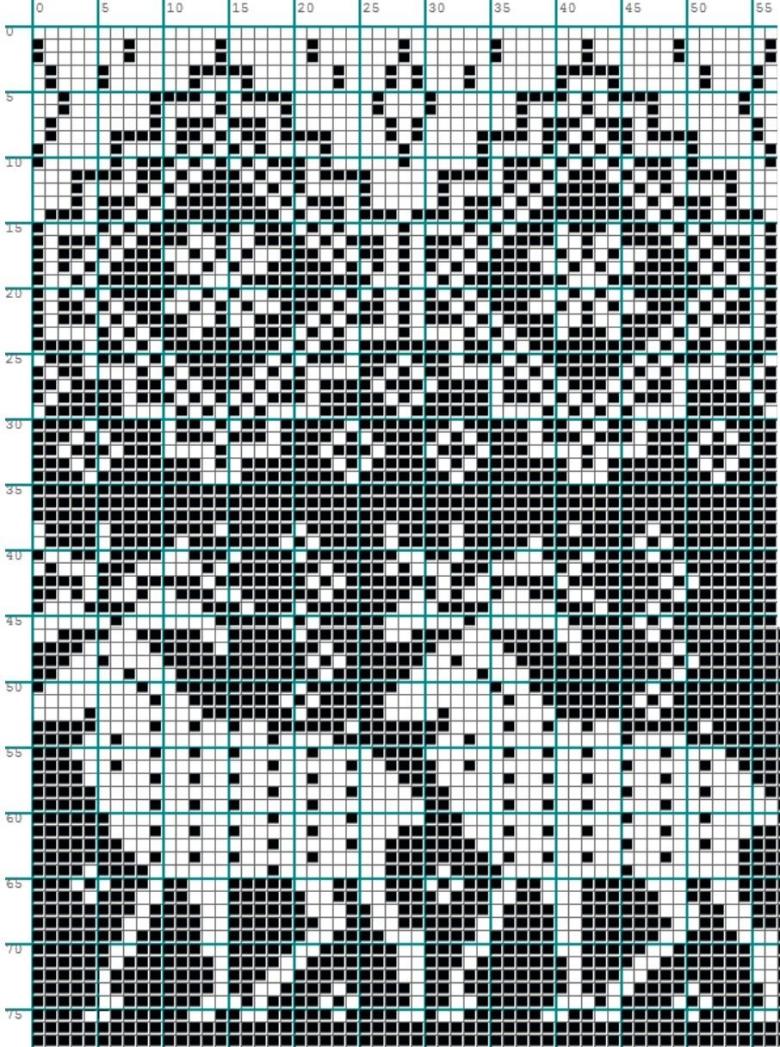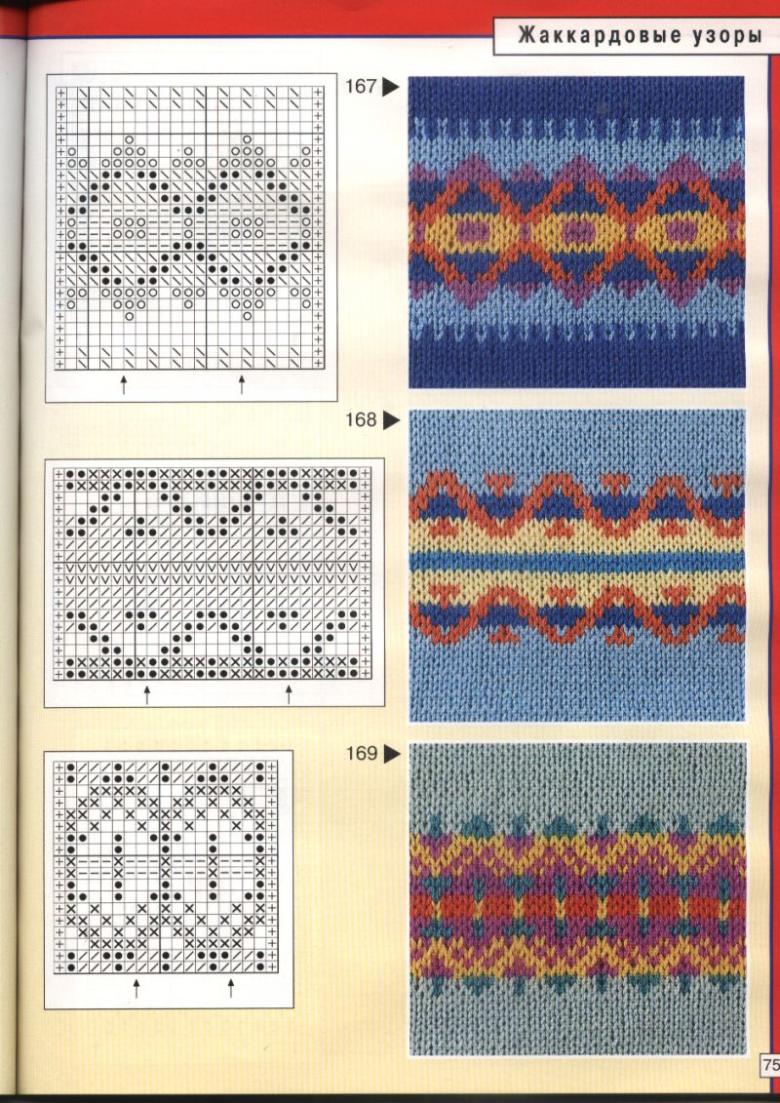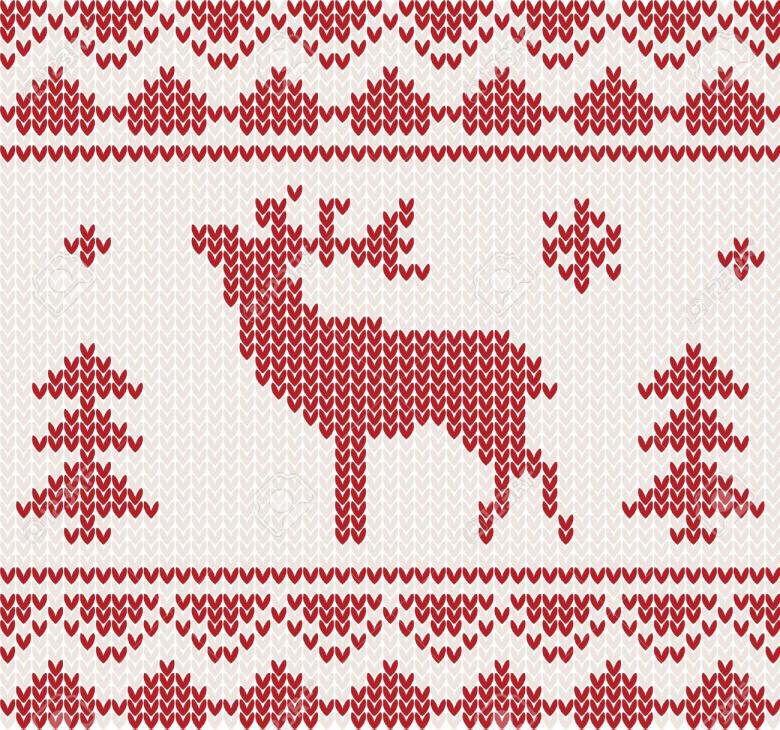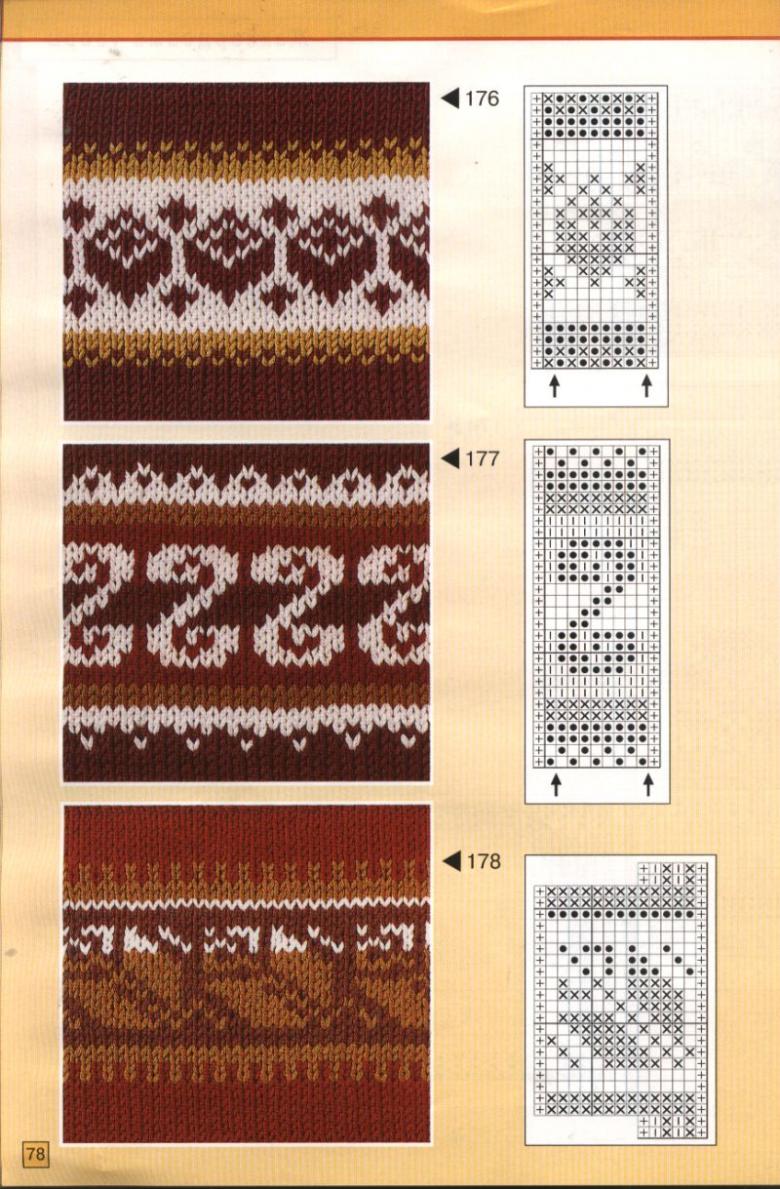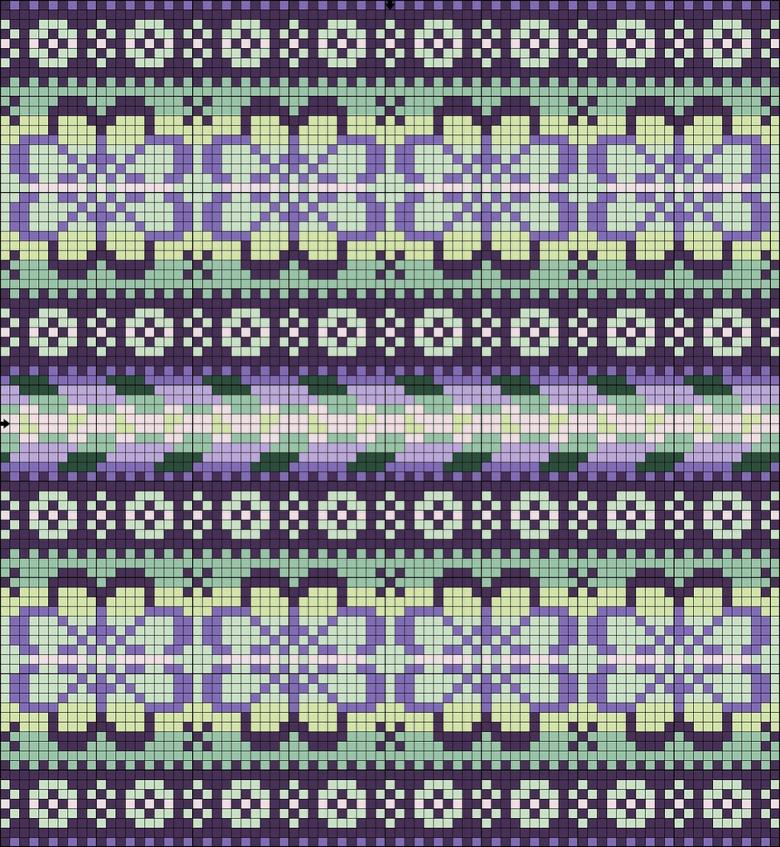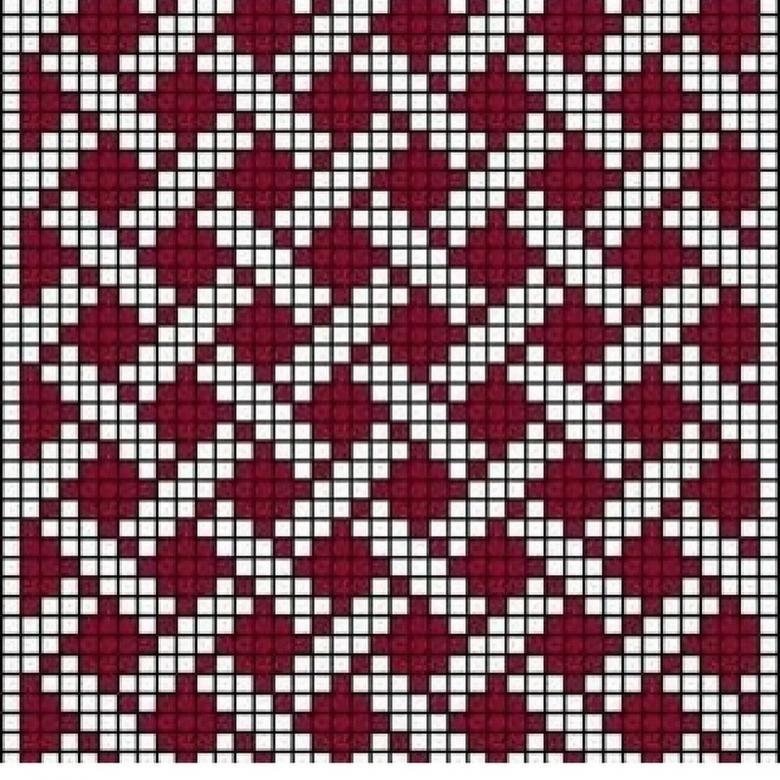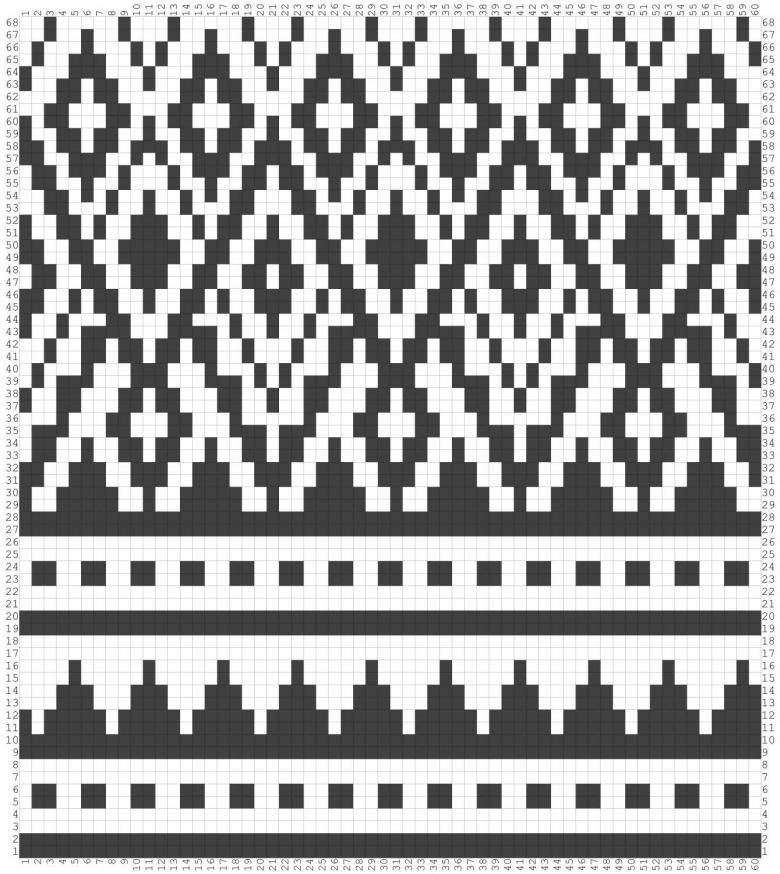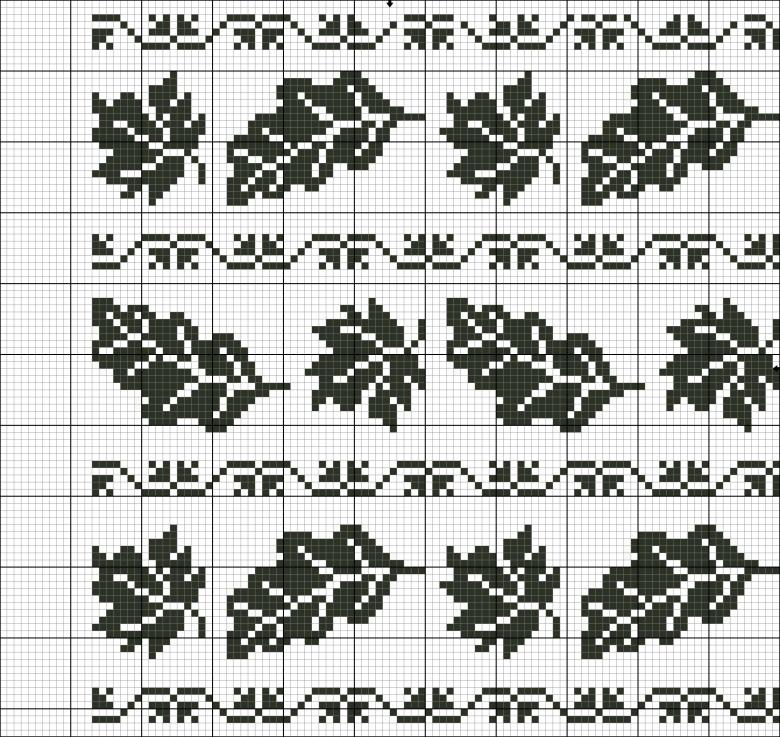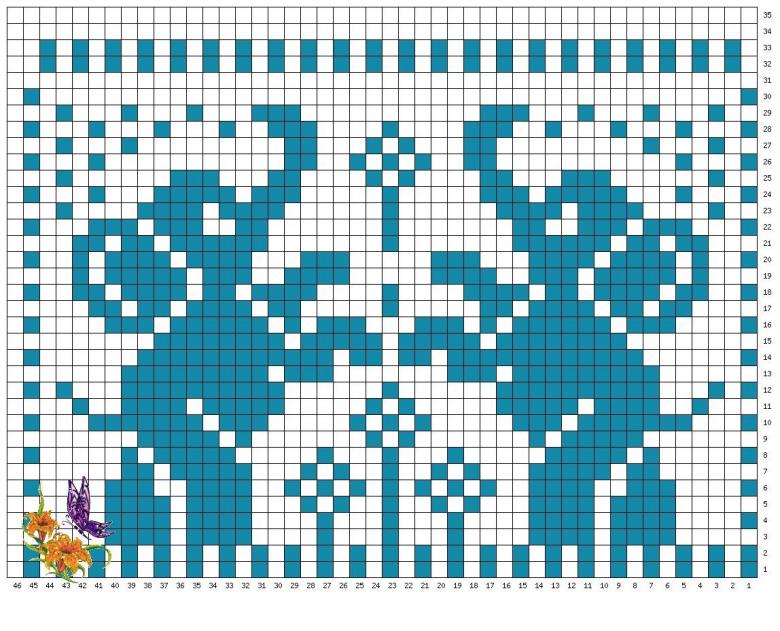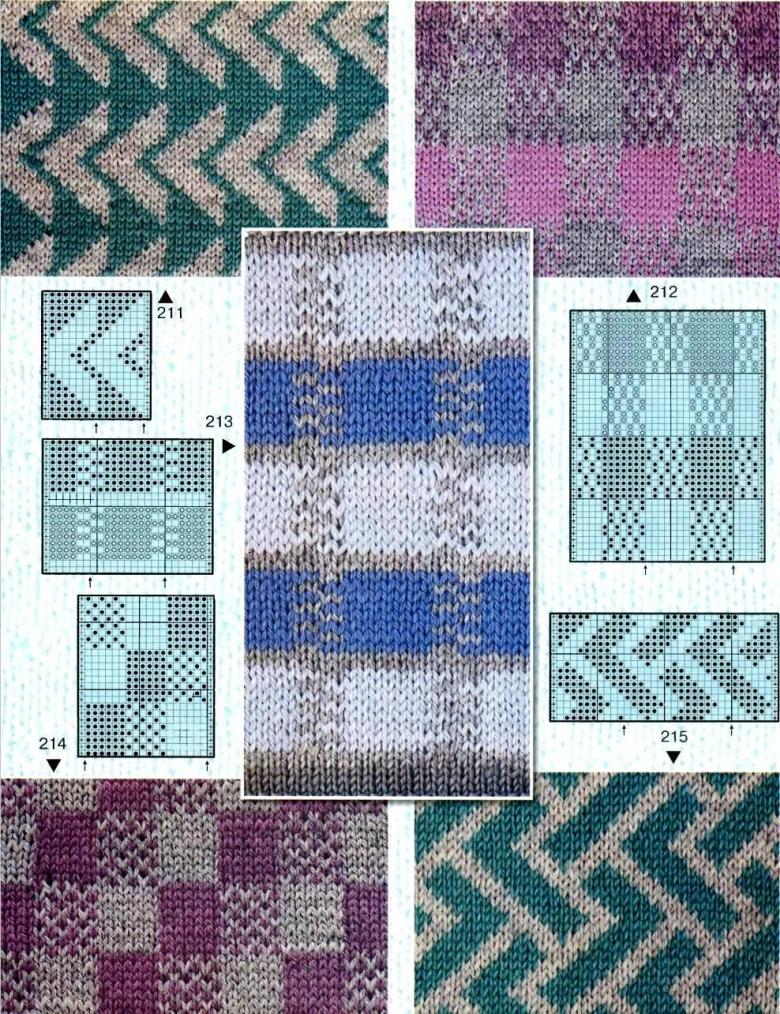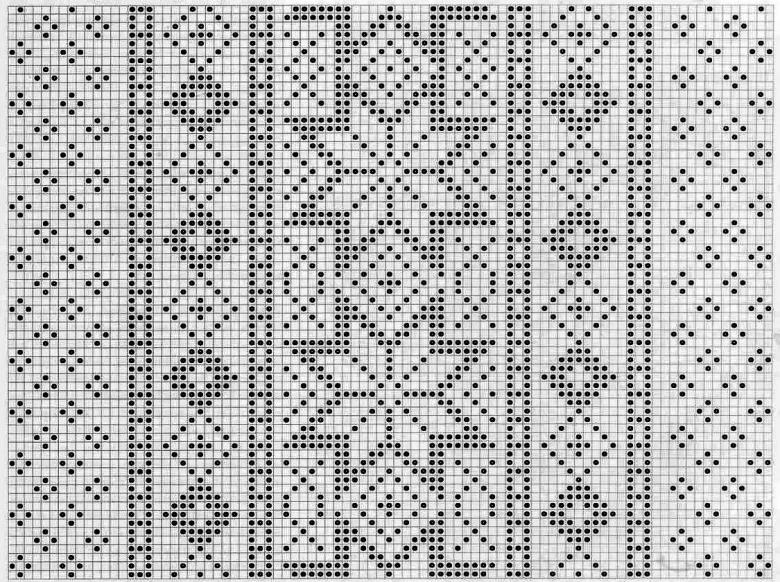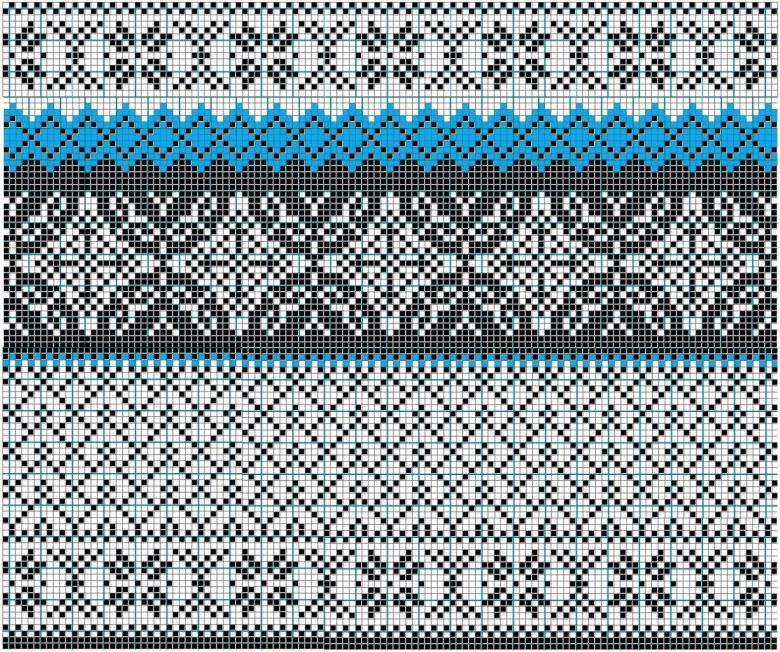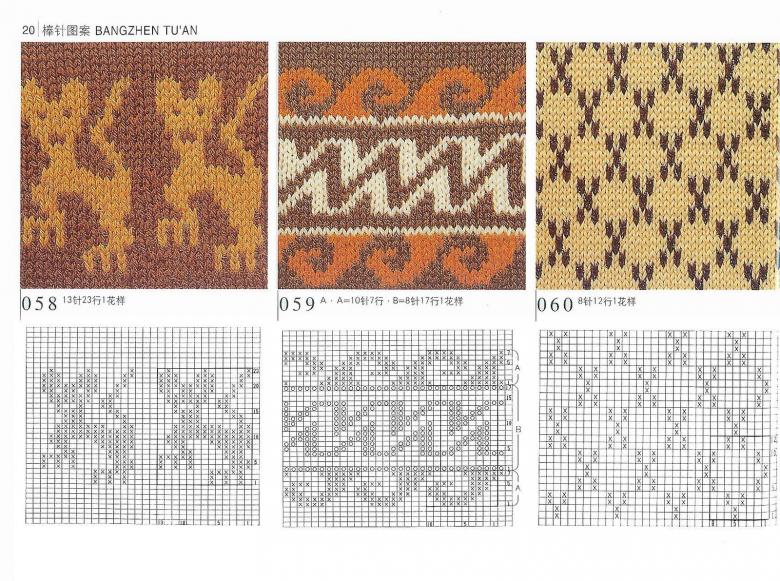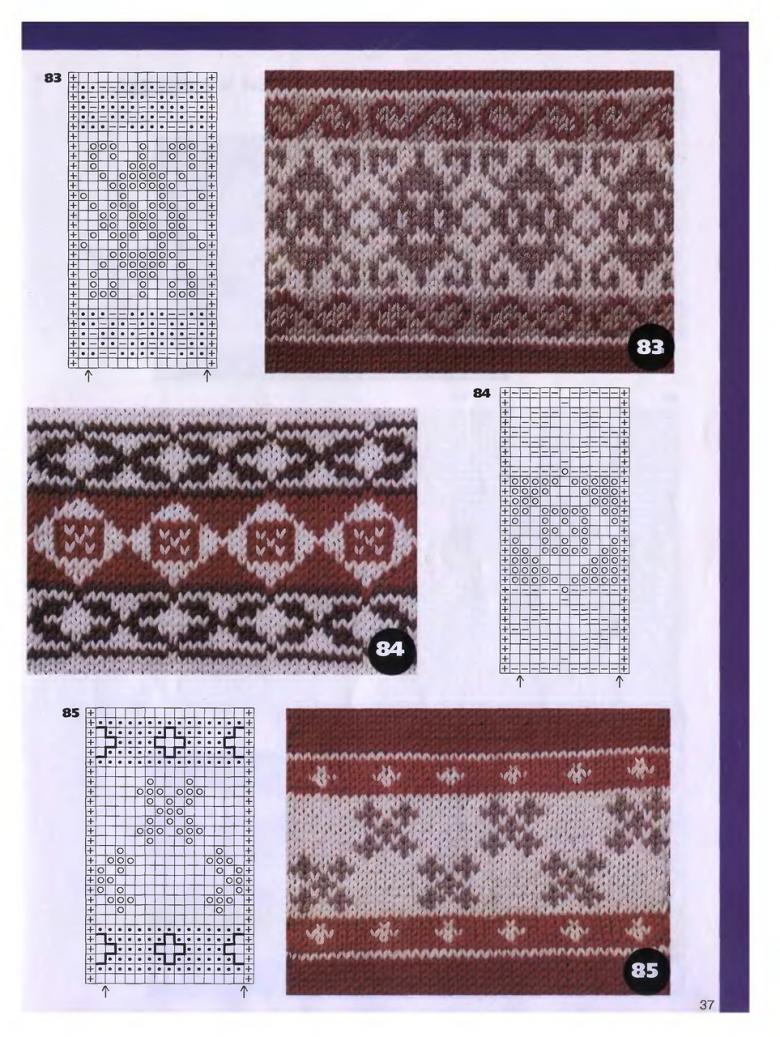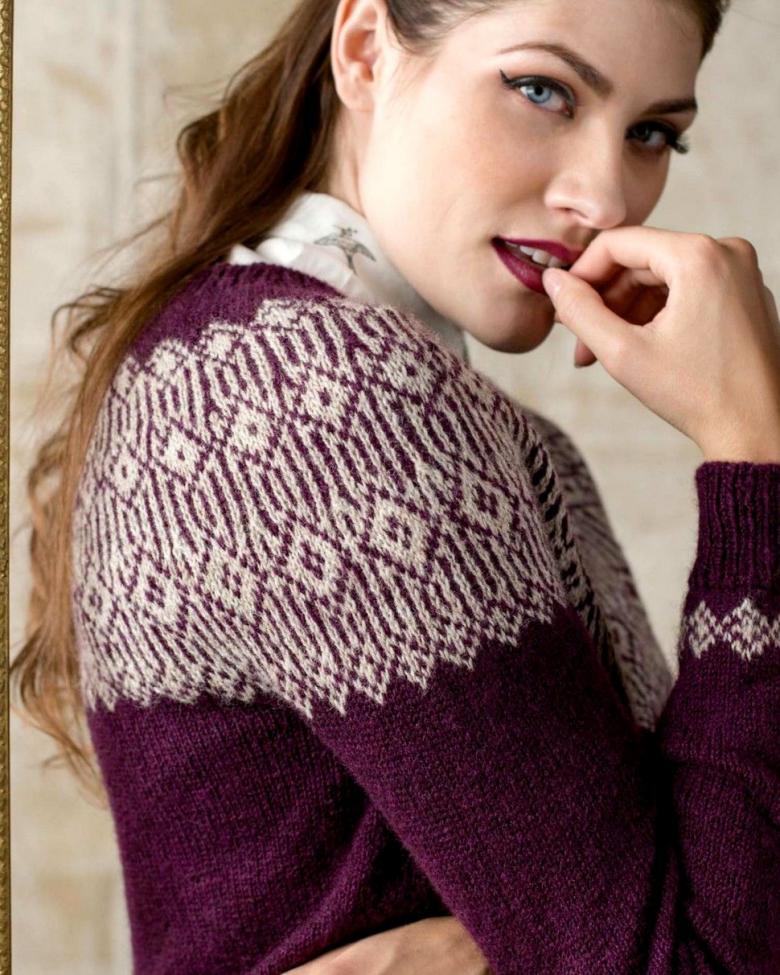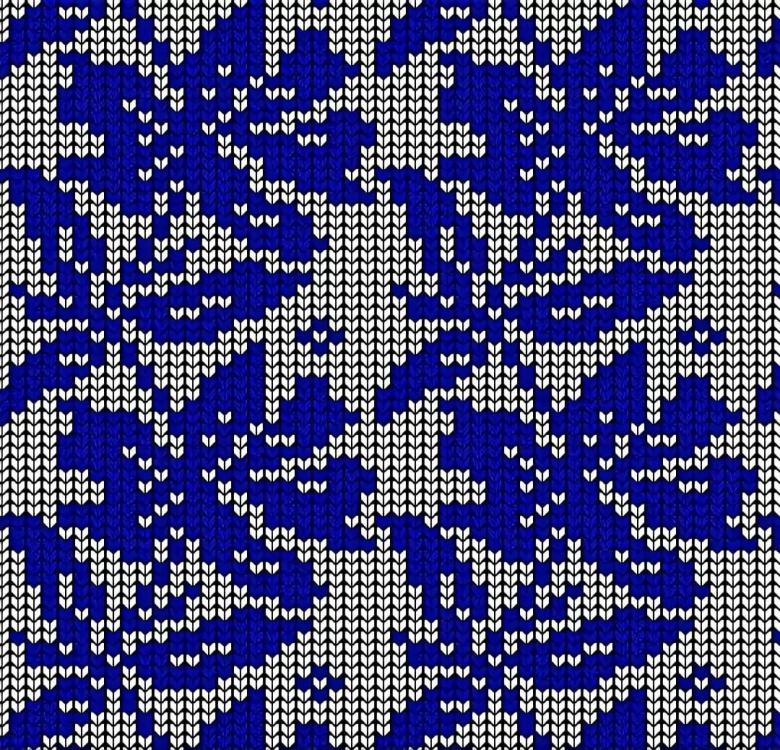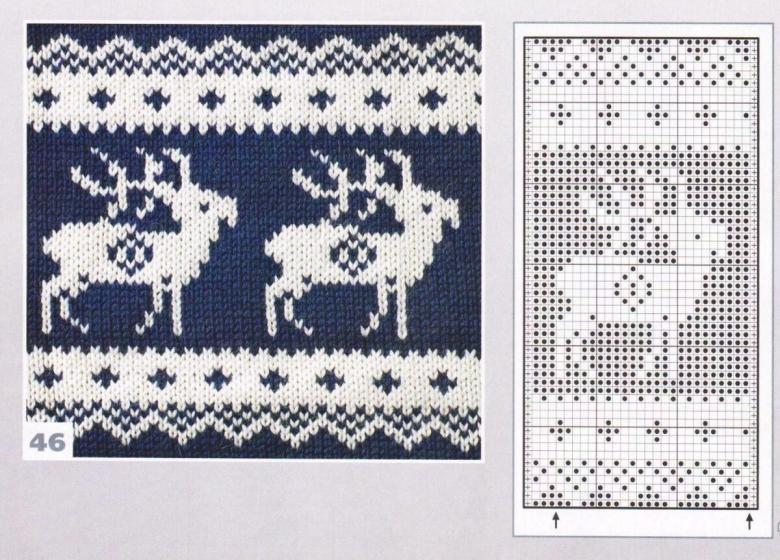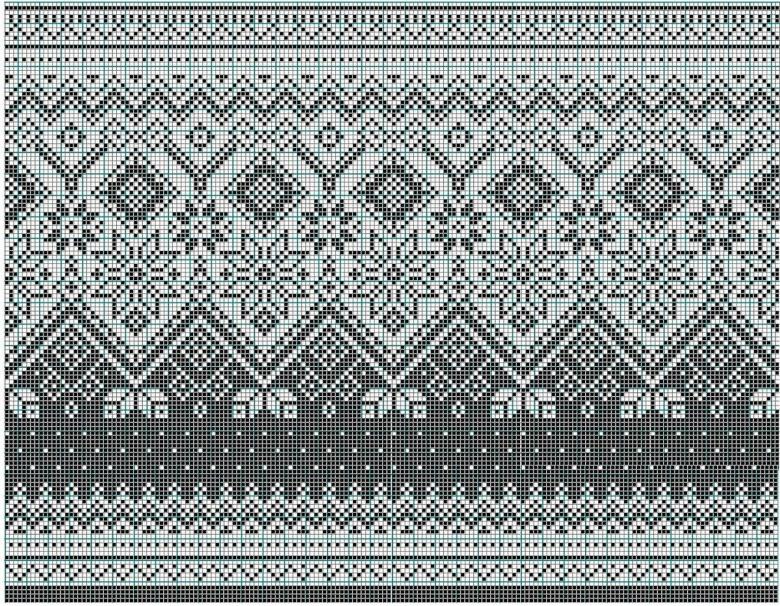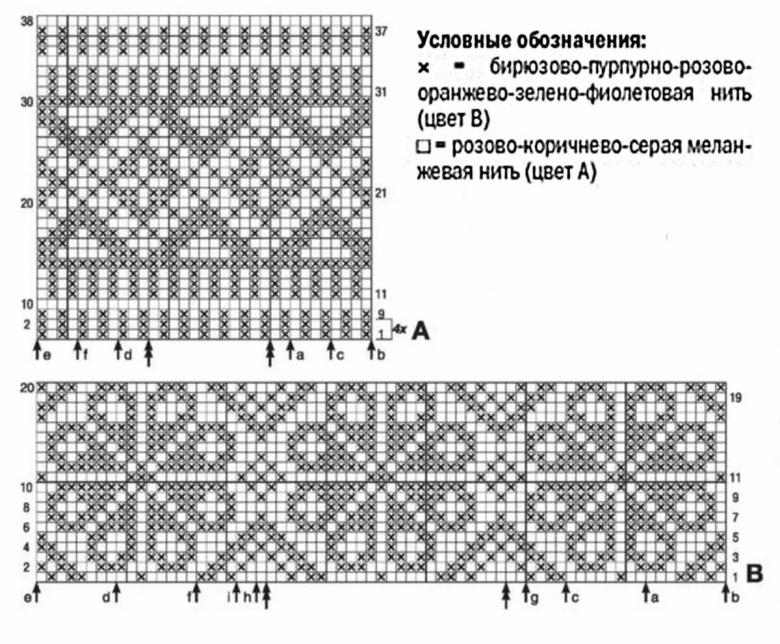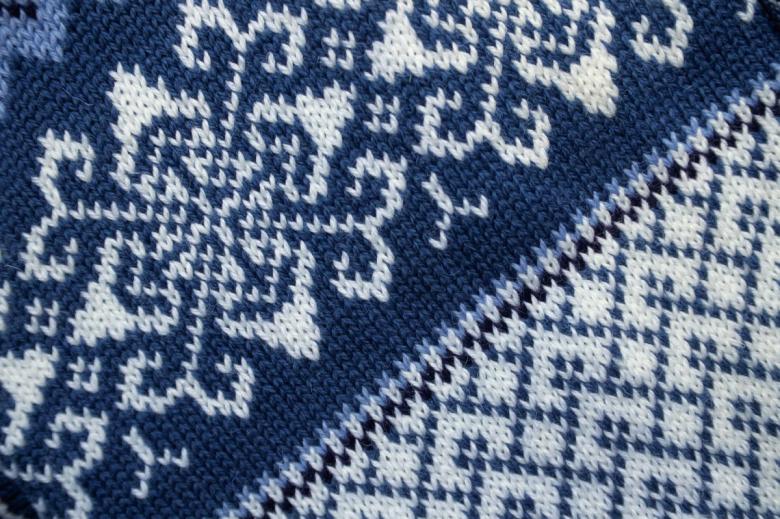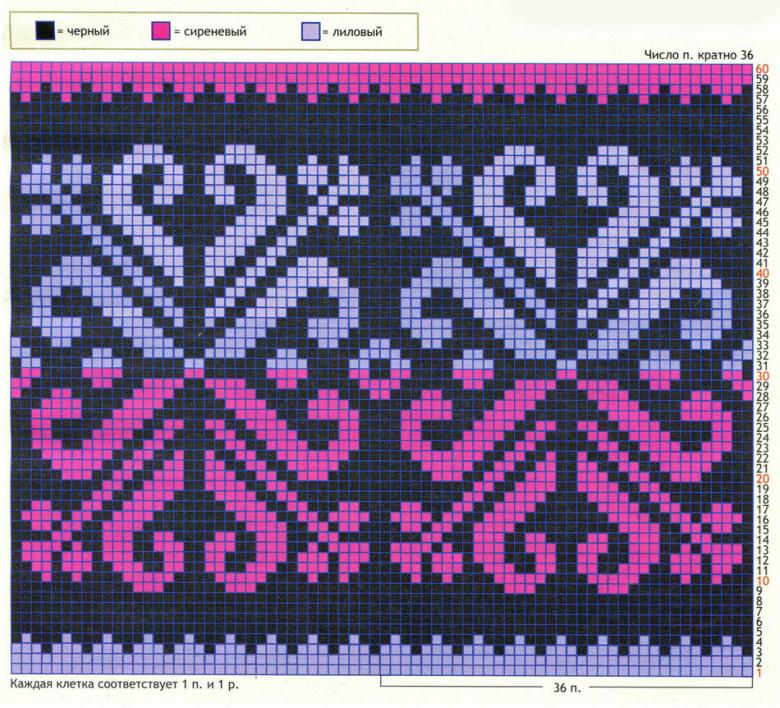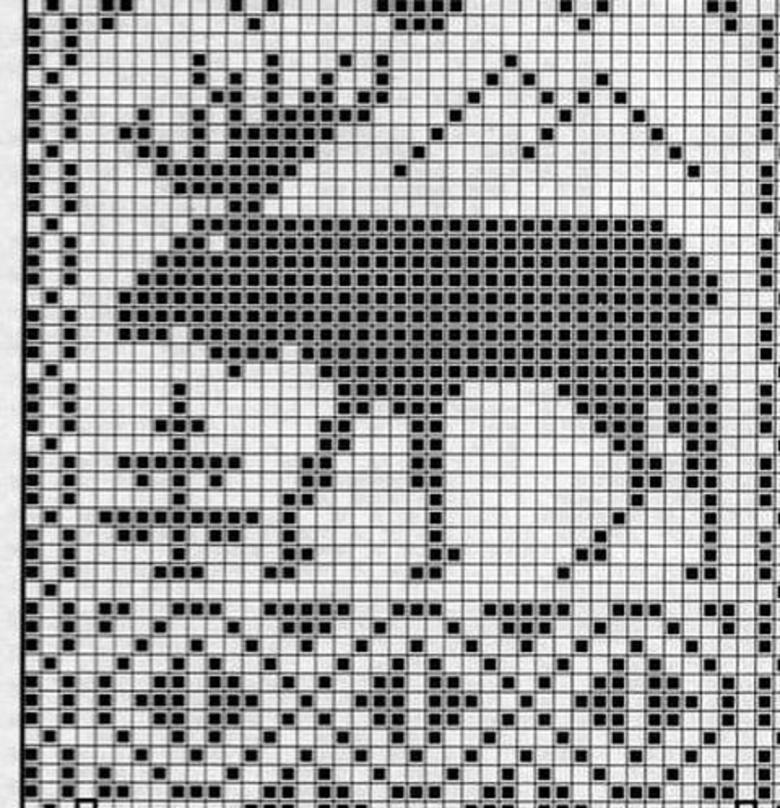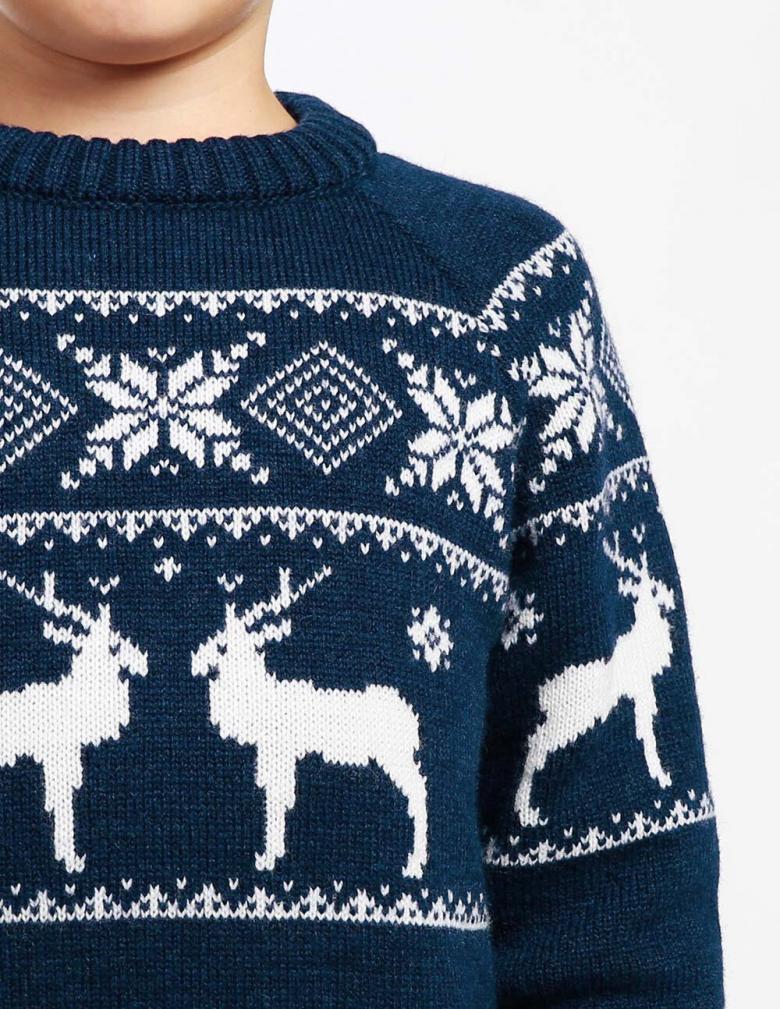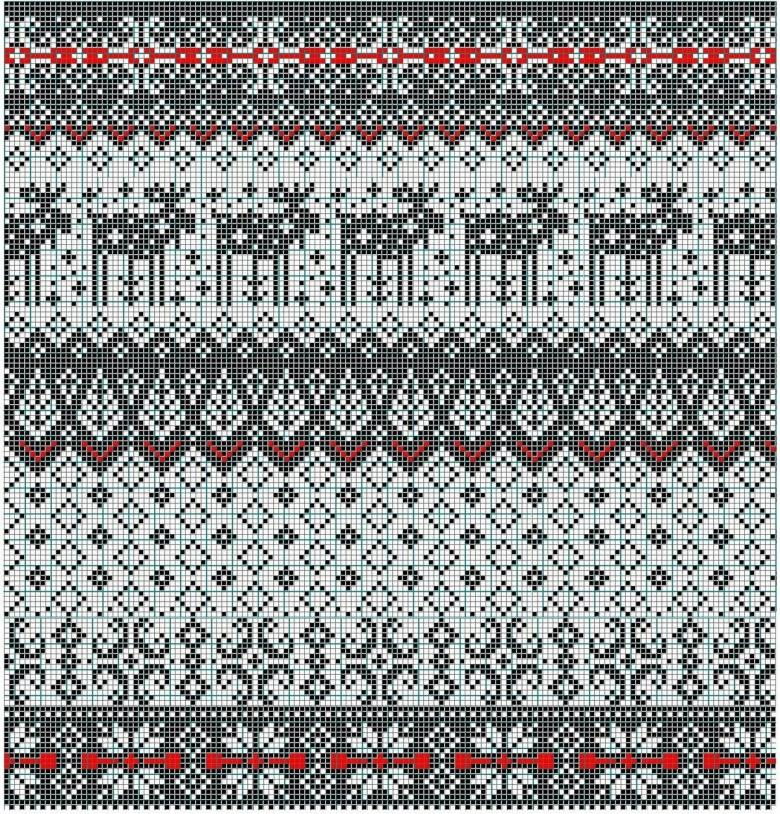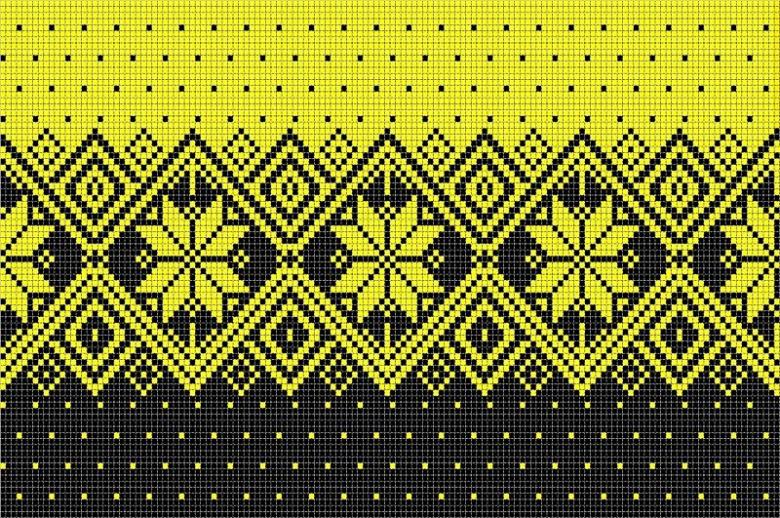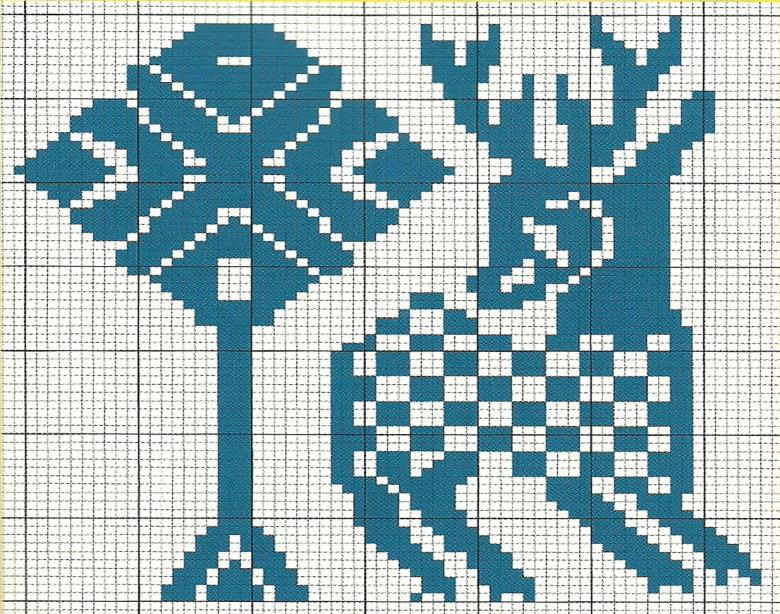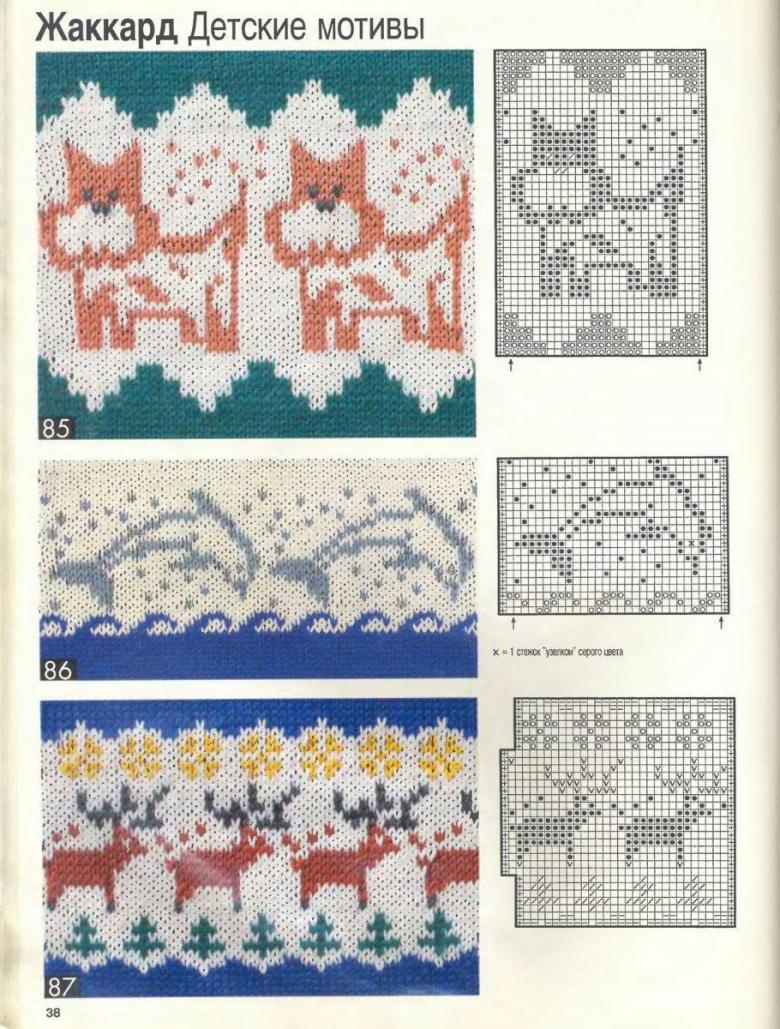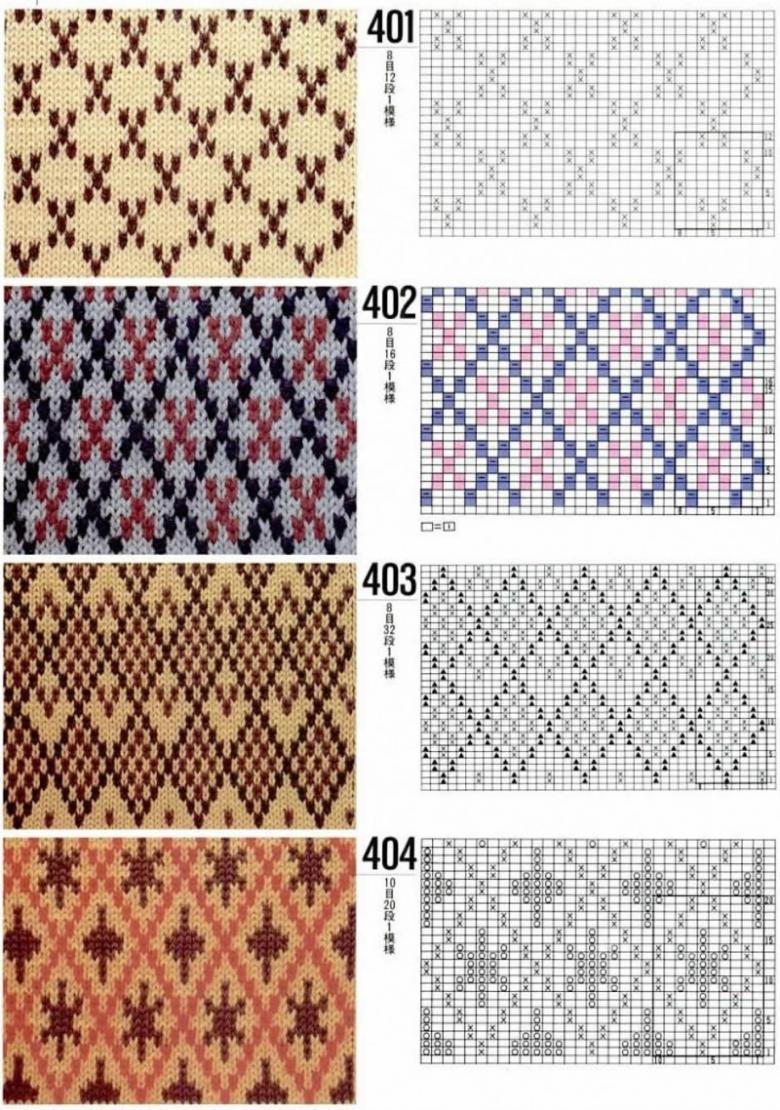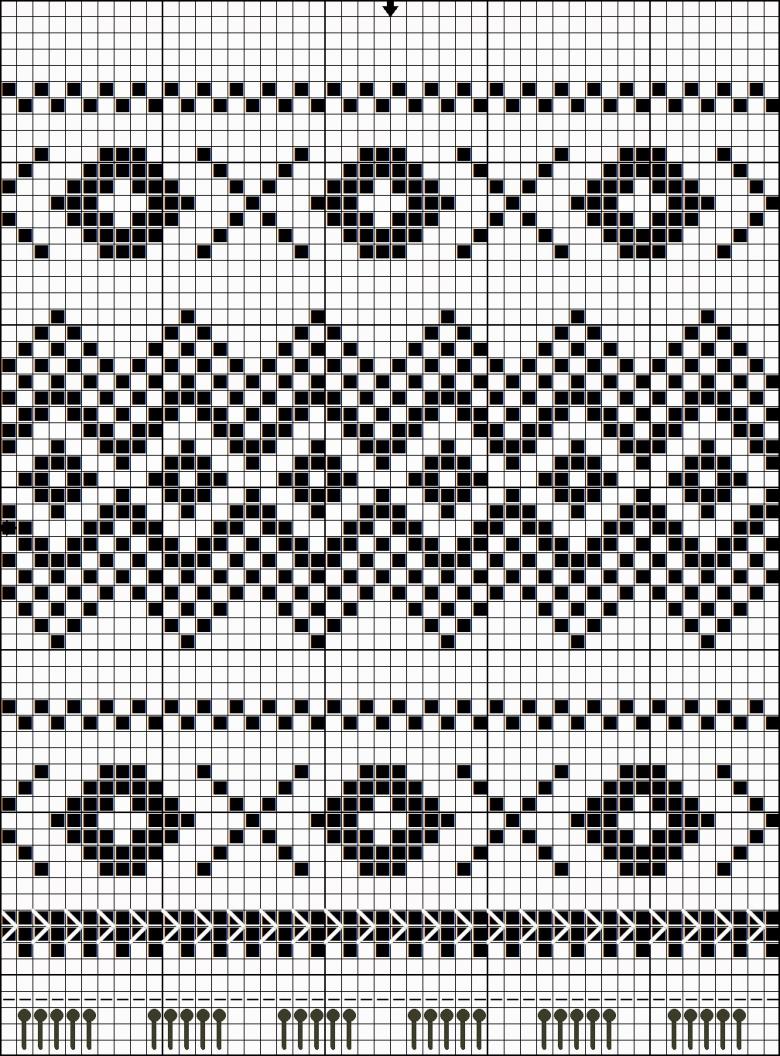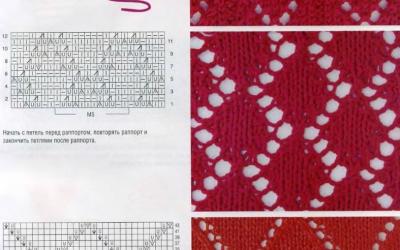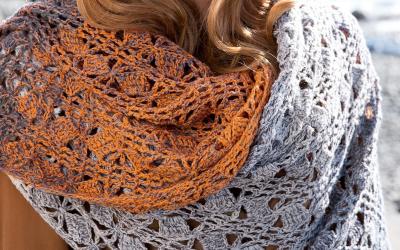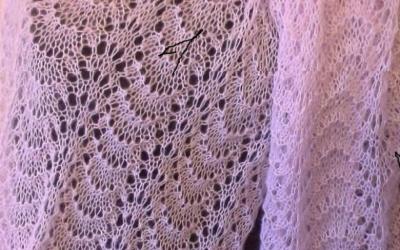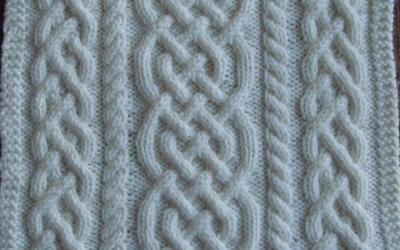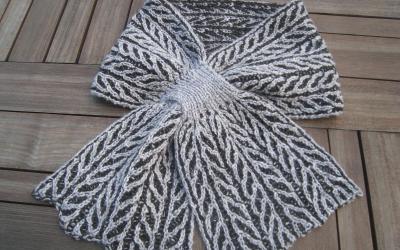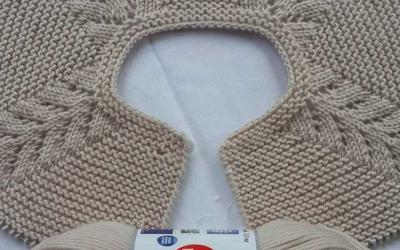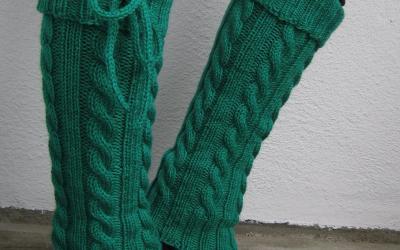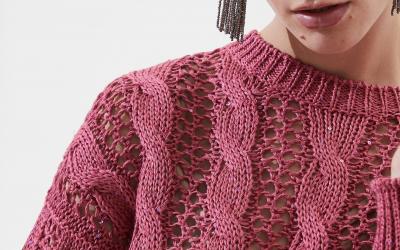Jacquard Patterns by Schemes with Easy-to-Use Instructions for Designing Patterns
Jacquard motifs are gaining particular popularity in the design of warm clothing. The origin of the word "jacquard" goes back to the 19th century, to the creator of the loom for dense and textured fabrics with a relief pattern, which has become so popular since those times.

By mastering the principles of knitting jacquard motifs, not only original ornaments are created, but also beautiful images on knitted items. This pattern is the basis for the famous Norwegian sweaters, mittens with cute reindeer, and other handicrafts.
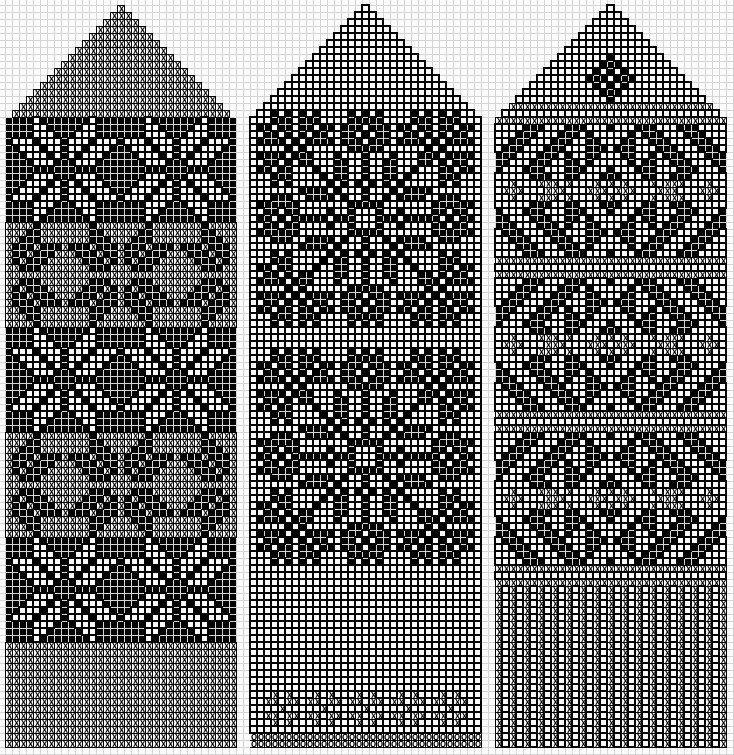
The basics of the jacquard technique
Two-color and multicolor motifs come out on the basis of the use of ordinary stocking knitting, on which the entire process of creating an ornament is based. The procedure when knitting a jacquard consists in capturing the loops of the desired tone on a needle, while simultaneously pulling a passive thread of the basic tone along the product. As a result, sealing broaches are formed on the wrong side.

To make the ornaments clear, when hand-knitting yarns of the same texture are used, otherwise the patterns on the fabric with yarns of different thickness will be blurred, indistinct.

Jacquard motifs are loved by needlewomen because thanks to them they implement their own ideas, they can create unique combinations. The main products, where you can find jacquard patterns with schemes are mittens, warm sweaters, original scarves.

Many needlewomen are familiar with the classics of jacquard - reindeer, snowflakes, herringbones, strict diamond shapes, but not everyone knows their true name. In terminology, such work is called a Norwegian pattern or meander.
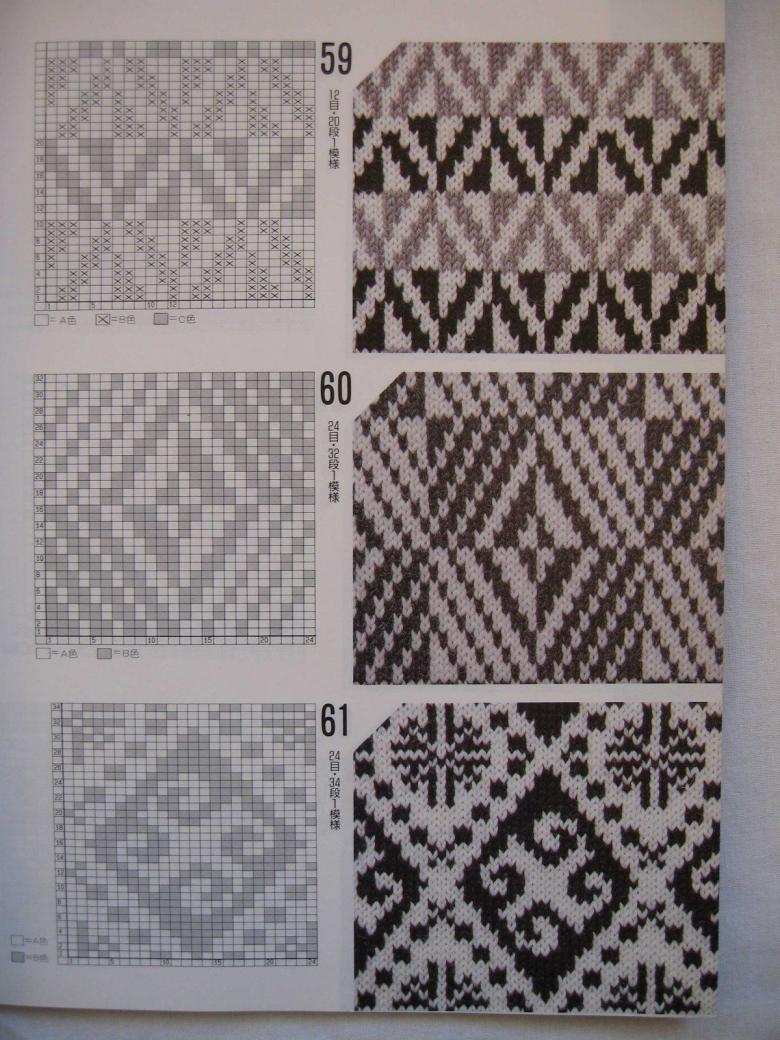
Rules of execution of the technique "Jacquard"
To fully master the technique of knitting in the style of "Jacquard", the novice handmaker must follow certain rules.
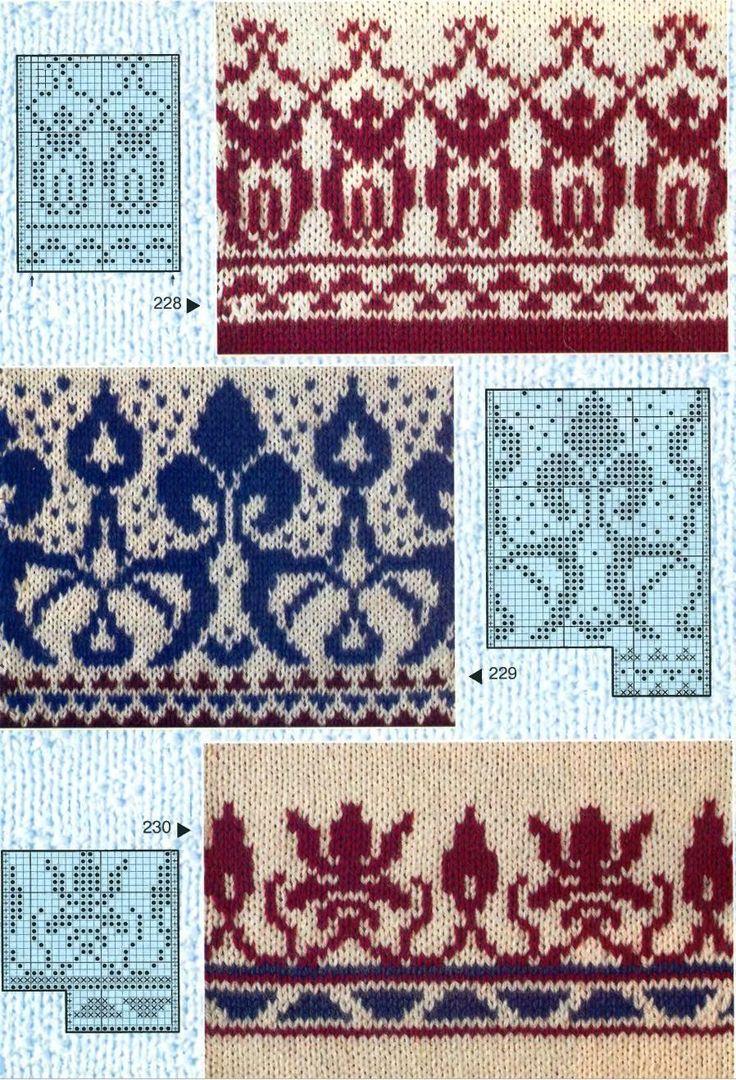
At the initial stage, determine the dominant tone of thread, the main coloring in this case will go on the bottom of the fabric, and the dominant - on top. These actions are necessary to keep the wrong side neat, to prevent skeins from tangling.

Bundle the skeins by adding the yarns of both tones together. Pull the unused tone along the wrong side of the hem, pulling the yarn slightly taut, not allowing the yarn to sag.
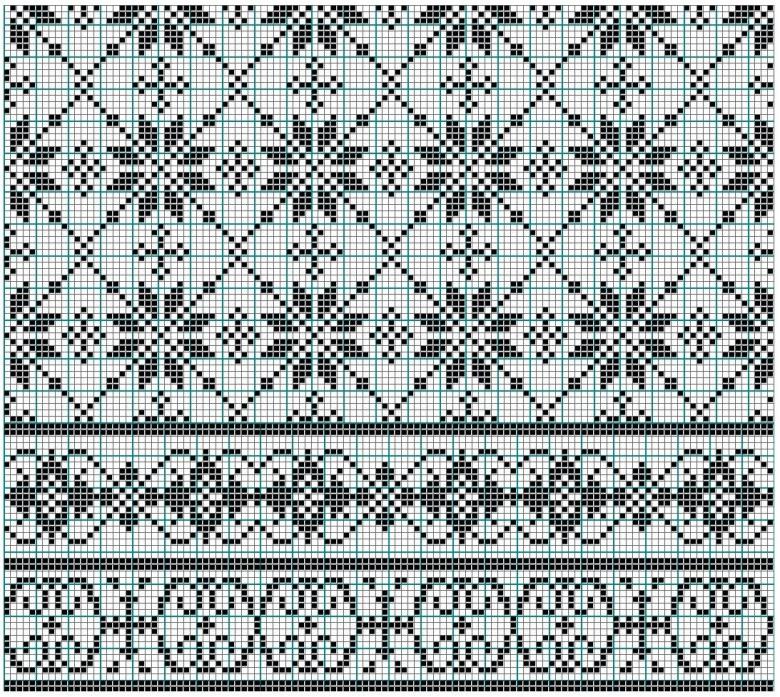
The fabric should be elastic and springy. Avoid stitches as much as possible, and knit sweaters and insulated pullovers in a circular pattern.

Classic jacquard motif patterns
Many novice needlewomen, starting to use jacquard patterns for knitting needles in their products, rush to understand how such beauty is created. They are helped in this by counting schemes, where one cell is considered 1 loop, and a certain symbol is considered the tone of thread.
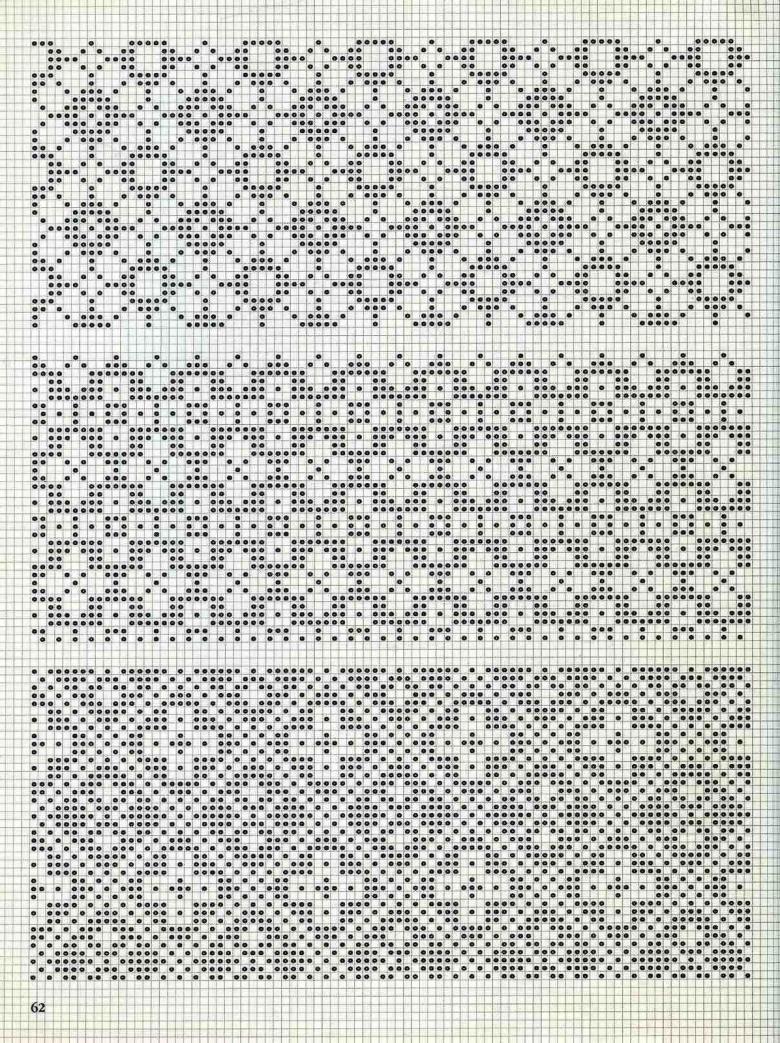
Knit the product is necessary, moving along the scheme from bottom to top. Formed such motifs exclusively on the front side, with yarns required tone involved in the work, as in the outer and the inner loops.
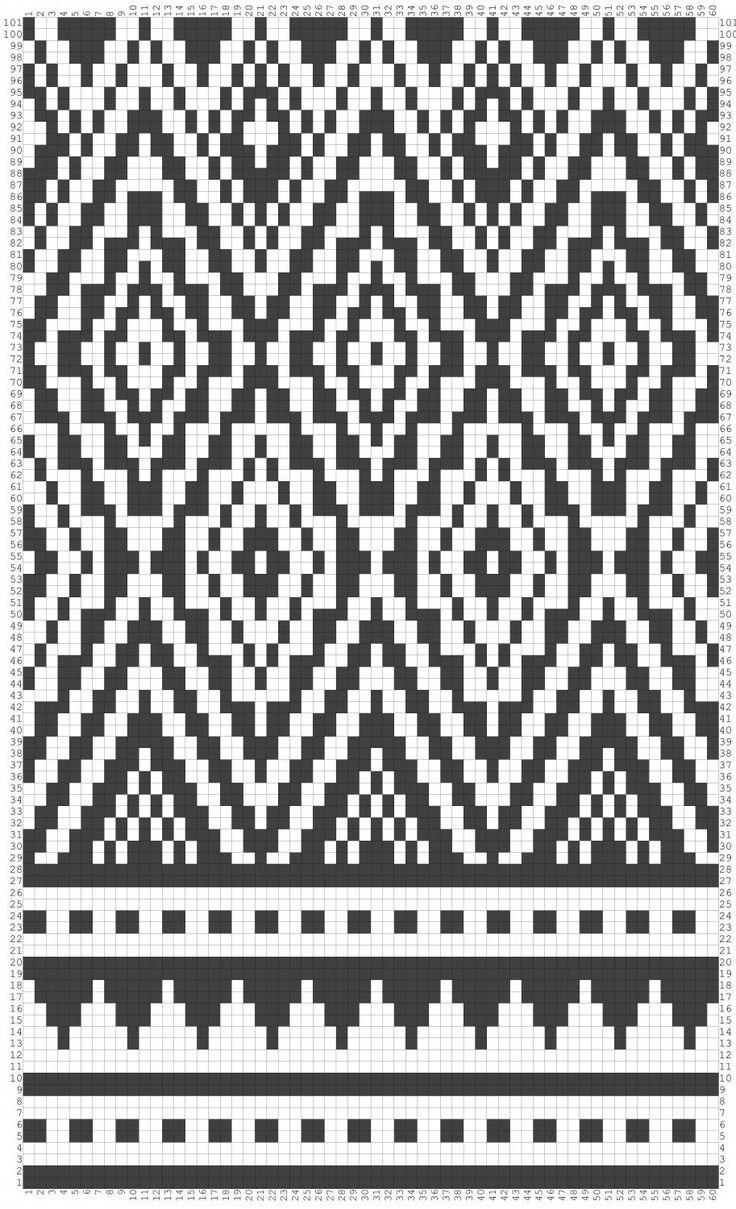
This is done so that the motif can be seen on the front side, while the wrong side is seen through the tugs and weaves of thread. The edge loops of multicolored rows are pierced with threads of both tones.
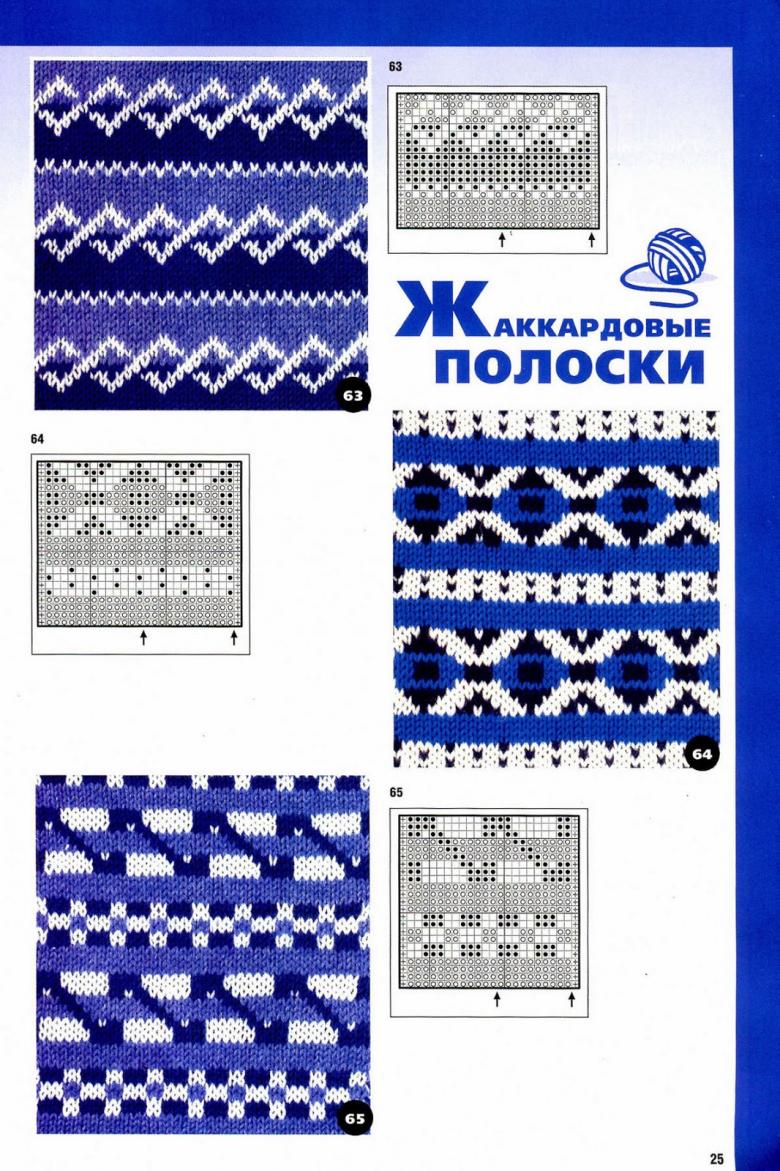
How to create a jacquard motif with no drawstrings
In addition to the classic jacquard method, there is also a method without creating a broach. To understand how this is done, consider the example of the "snowflake" motif.

The classic "snowflake" pattern without broaches
To perform this motif, a pair of skeins of contrasting yarns of the same texture is used. To knit the basis is recruited 25 loops. 23 units of them are knit, and 2 edge stitches, and the edge stitch, which serves as the end of the row, is pierced with yarn of both tones.
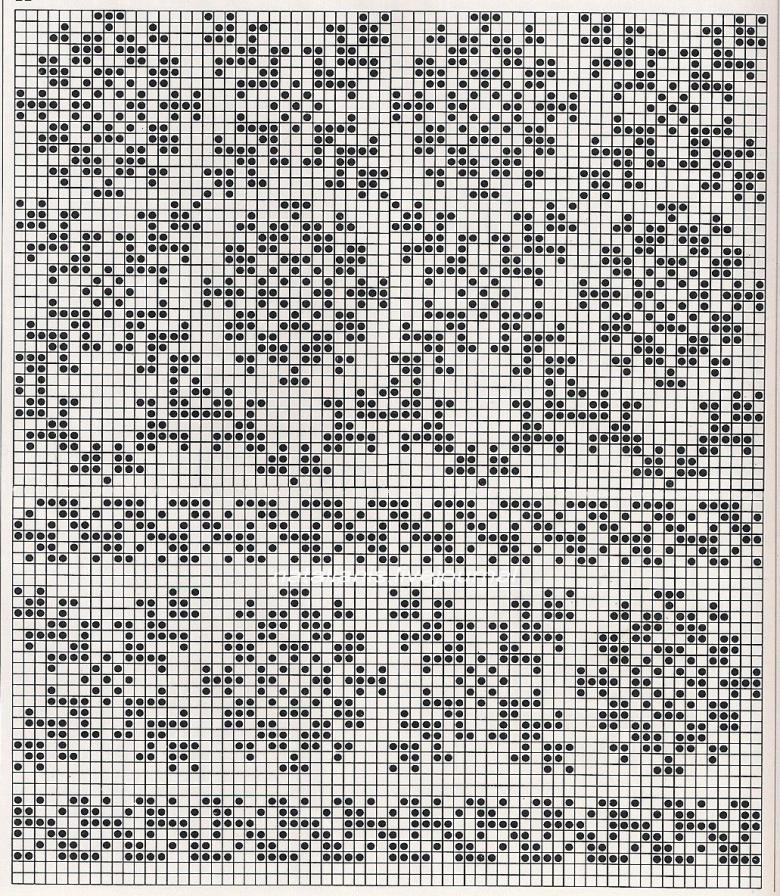
The obligatory closing of edge loops helps to keep the tension of all yarns on the cloth, this action also prevents the formation of vertical broaches in the pattern.
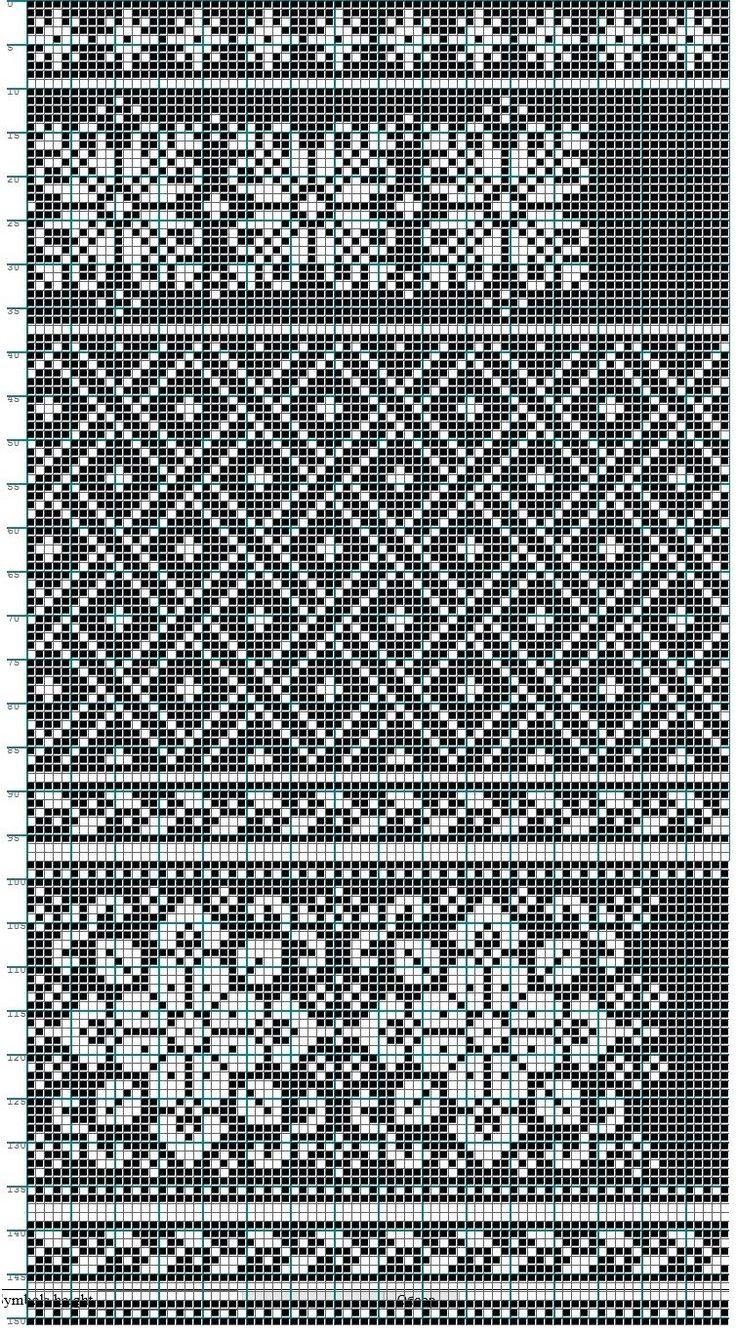
If knitting in yellow and blue, the first stitch is in yellow, and then the yellow yarn is taken from the back side to avoid pull-ups, simulating the tying of the blue yarn, regardless of its close proximity to the needle. In the same way, the knitting cloth is sealed.

After doing this, the blue yarn can be inserted in the creation of the product. Because of the distance between the yarn and the knitting tool, the yarn is gripped by bringing the needle under the right wall. The process of knitting the product further occurs strictly on the basis of the instructions.

Children's motifs
There are a huge number of schemes of knitting jacquard patterns for children. Its range includes knitting, from the simplest Christmas trees and cute snowflakes to favorite cartoon characters. Children will appreciate a product knitted by the hands of their loving mother. These motifs look great on pullovers, sweaters for children.

Knitting openwork Christmas trees
This is a classic children's motif, consisting of 12 buttonhole units. Carefully following the prescription, the pattern is made from the first to the 20th row. In the inner rows, the work process is the same, and the stitches should be made on the wrong side.
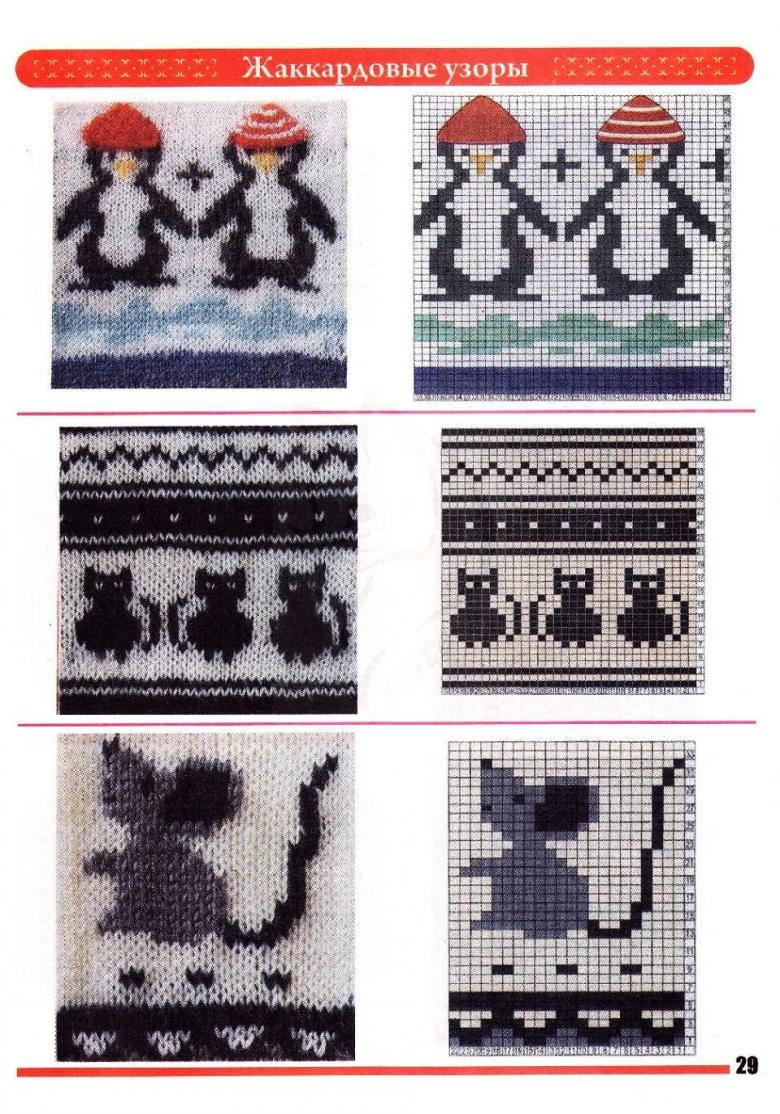
Execution of the "Fox" motif
A complete motif consists of 32 stitches. The product with a cute fox is drawn on the front of the fabric. On the inner rows everything is done logically, to go to the comparison with the front part.Similar motif is integrated into the fabric to create a sweater or warm mittens.

Technique "Jacquard for the lazy"
"Jacquard for the lazy" - a lightweight technique, which can cope with any novice knitter. The performance of this technique is based on the following actions:
- Such motifs are created by alternating two rows of the same tone, then changing the clew and going with yarn of a different color;
- After a row is tied with one color of yarn, the second tone is fixed by the ending loop of the row, run across the width of the fabric;
- The pattern is drawn out by pulling loops from other rows;
- Also, the lazy pattern can be made by alternating the tone of thread through 2-5 loops.
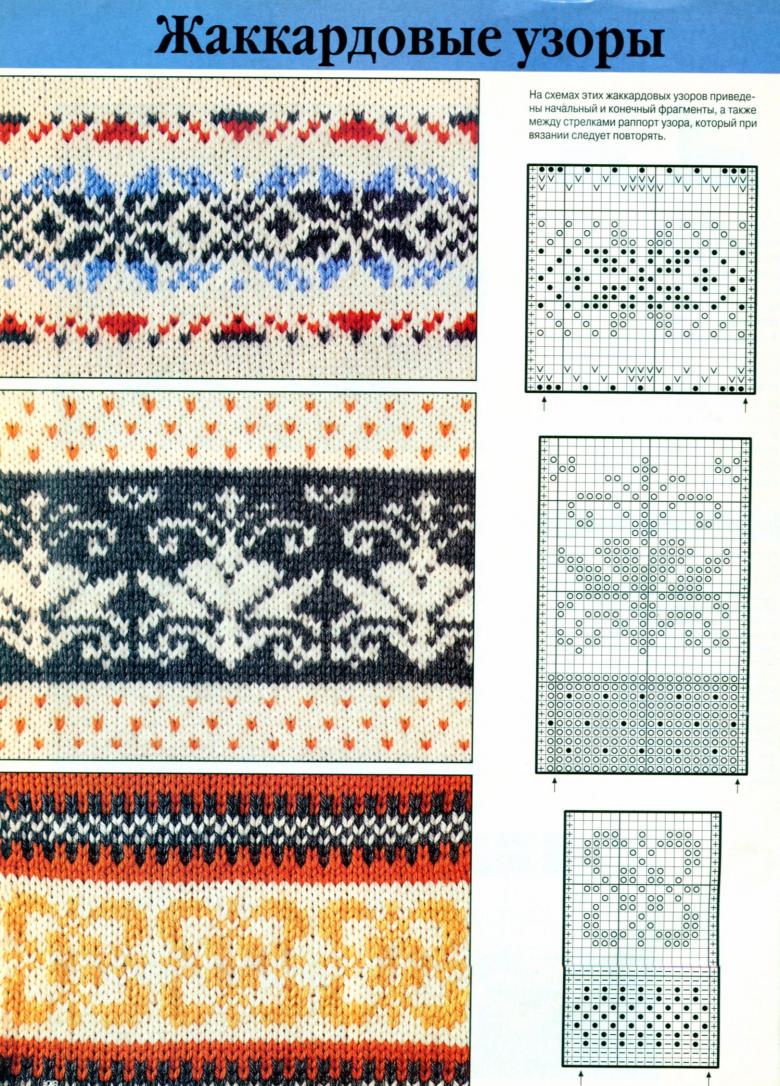
The detailed patterns of the jacquard style motifs are unraveled from right to left, and backwards in the wrong direction. It is worth noting that, despite the number of tones in the product, the sequence and alternation of tones will be the same.


